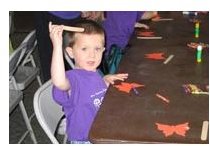Developing Student Focused Interventions on the Preschool Level
What Interventions are Needed?
Providing the necessary student focused interventions on the preschool level is a critical component to getting these young learners ready for Kindergarten. If we do not provide our most vulnerable learners the support that they need when they are young, we risk them falling through the cracks and they then face an uphill battle.
Step one is to evaluate what basic skills these students lack. Through formal and informal assessments, you will need to break down what holes exist in their learning. Some areas of focus should include:
- shapes
- colors
- recognition
- letter recognition
- letter sounds
- rote counting
- one-to-one counting
- ability to recognize their own name
- writing numbers/letters
You may even find some social or behavioral concerns that you need to address. These can include:
- paying attention during small group/large group activities
- following directions
- making friends
- impulsive behavior
Once you have identified any areas of concern, you can move on to providing any necessary interventions.
Before Providing Interventions
Before you start any intervention program with a student, you will want to discuss your concerns with the child’s parents. Once you begin the intervention, be sure to document what specific interventions you are providing and how often you are providing them.
You will also need to progress monitor the student periodically to see if the interventions are working. This can be an oral or written evaluation of any skills you are practicing, or an observation of a child’s behavior. If you perform an oral assessment or an observation, be sure you are taking clear and thorough notes of what you are doing and what you are observing from the child. If you continue to do something that is not having a positive affect, you need to change up your approach. If you try several different interventions and there is still no positive result, this may lead to a discussion with parents about further testing. (photo taken from sxc.hu)
Continue to page 2 for more information on student focused interventions on the preschool level.
Academic Interventions
For any of the academic interventions, you will need to likely provide the student with some one-on-one direct instruction on the skill they are lacking. Most of the first list may just require some additional practice and review for the student to master. Keep in mind, the idea behind intervention is to do something different from what is occurring during the regular instruction time. If they are not grasping what you are teaching to the large group, repeating the same lesson one-on-one is not intervention. Look for different ways to enforce the skill, or break it down into smaller steps so that the child can achieve some success. Make use of technology when possible and see if parent volunteers can help as well.
Behavioral Interventions
For some of the social/behavioral concerns, here are some possible interventions:

Attention Deficits:
- Be sure that the student has his/her eyes on you before you begin instruction.
- Sit the student in close proximity to where the instruction is occurring.
- Remove any distractions from the area (pencils or other materials, other students who may be distracting)
- Break up activities into smaller steps and reward the student for following those smaller sets of directions.
- Keep the student actively involved in a lesson whenever possible. Frequently ask him/her questions or ask him/her to hold a prop for you during the lesson.
Following Directions:
- Be sure that you have the student’s attention before giving directions.
- When giving oral directions, quietly repeat the directions to the student after you have given them to the entire class. Ask the student to repeat them back to you so you can check for understanding.
- When possible, like with daily activities, make a list of steps and even include pictures as reminders. It could be a checklist that a student follows to hang up their coat, checking in for the day, and choosing a center for the day. Each could have a picture to help the student remember what step to complete next.
Impulsive Behavior:
- Remind student of appropriate choices.
- Be sure to always point out positive behaviors that you observe in the child.
- Sit the student near a classmate who models positive behaviors.
- Give student breaks when possible. Break down large tasks into smaller steps.
As with any negative behavior, a behavior checklist may also help. You can divide your day into chunks and give the student a mark, smiley face, or sticker for each small section of the day. Assign a reward for a specified number of positive marks for each day or for the week. The idea is to break the day down so that the student can achieve small successes during the day.
Photo: taken by Marlene Gundlach, Spring 2004
Document and Re-Evaluate
As mentioned before, as you provide interventions, it is important to track your efforts and re-evaluate what is working for each individual child. This is probably the most time consuming part of providing this type of support. But, without it, you cannot be sure you are providing everything your students need. With the proper documentation, you can truly look back on what you did with each child and how it worked. You also then can show hard evidence to parents or other professionals about what you have done to provide support. This information is also useful to any teachers who come into contact with the child down the road.
Interventions are a critical part of student achievement. With the proper planning, you can be sure you are providing the proper student focused interventions on the preschool level to each child in need. As educators, that should always be our focus…reaching every one of our students.
